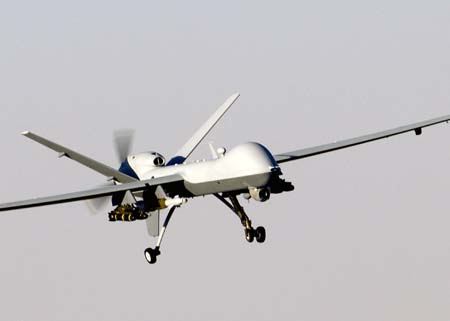Lt. Gen. Da ve Deptula, the Air Staff’s head of intelligence, surveillance, and reconnaissance, said it is not unrealistic to imagine an unmanned aerial vehicle as successor to fifth-generation fighters—the F-22 and yet-to-field F-35—in our national military strategy; however, he added that UAVs still require some technology maturation before they would be ready to assume that mantle. “It depends on your definition of fighter,” Deptula said during the July 23 press briefing on the service’s new unmanned aerial systems flight plan. (For the flight plan, see What Cockpit) Terminology has a habit of fixing us in the past, he said. “That quite frankly has been some of our challenges with labeling fifth-generation fighters,” Deptula explained. He added that fighters such as the F-22 bring a wide array of capabilities to a fight, from electronic attack to standoff strike and ISR sensors. Today’s fifth-gen fighters are flying sensor platforms that will have the ability to penetrate denied airspace and extract information while also retaining traditional strike capabilities. “An F-22 or an F-35 … does not perform the same functions as a P-51 did,” he said. UAV systems will certainly be used to deliver weapons on a target in the future, he said, but if the question becomes dealing with controlling airspace filled with enemy aircraft, technology is not yet at the point where an unmanned vehicle can achieve the level of spherical situational awareness, assimilation, and translation of information into action that a human being in a cockpit can. “At some day, we might be able to, but until then, we’ll still have manned aircraft,” he added. (For more from the July 23 UAS Flight Plan rollout briefing, read The Persistence-Plus Cockpit)
ve Deptula, the Air Staff’s head of intelligence, surveillance, and reconnaissance, said it is not unrealistic to imagine an unmanned aerial vehicle as successor to fifth-generation fighters—the F-22 and yet-to-field F-35—in our national military strategy; however, he added that UAVs still require some technology maturation before they would be ready to assume that mantle. “It depends on your definition of fighter,” Deptula said during the July 23 press briefing on the service’s new unmanned aerial systems flight plan. (For the flight plan, see What Cockpit) Terminology has a habit of fixing us in the past, he said. “That quite frankly has been some of our challenges with labeling fifth-generation fighters,” Deptula explained. He added that fighters such as the F-22 bring a wide array of capabilities to a fight, from electronic attack to standoff strike and ISR sensors. Today’s fifth-gen fighters are flying sensor platforms that will have the ability to penetrate denied airspace and extract information while also retaining traditional strike capabilities. “An F-22 or an F-35 … does not perform the same functions as a P-51 did,” he said. UAV systems will certainly be used to deliver weapons on a target in the future, he said, but if the question becomes dealing with controlling airspace filled with enemy aircraft, technology is not yet at the point where an unmanned vehicle can achieve the level of spherical situational awareness, assimilation, and translation of information into action that a human being in a cockpit can. “At some day, we might be able to, but until then, we’ll still have manned aircraft,” he added. (For more from the July 23 UAS Flight Plan rollout briefing, read The Persistence-Plus Cockpit)
The rate of building B-21 bombers would speed up if the fiscal 2026 defense budget passes. But it remains unclear how much capacity would be added, and whether the Air Force would simply build the bombers faster, or buy more.
